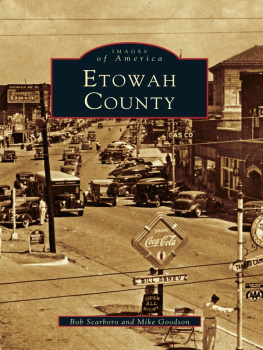
IMAGES
of America
HISTORIC DANCE
HALLS OF EAST
CENTRAL TEXAS
ON THE COVER: Shown here is the Fayetteville KJT Hall. The Katolick Jednot Texask (Catholic Union of Texas) is a nonprofit fraternal benefit insurance society founded in 1888. It operates under the lodge system and has a representative form of government. The organization grew out of a national Czech fraternal order, but split away to become a Texas institution. This hall was torn down sometime in the 1970s. (Courtesy of the Fayette Public Library.)
IMAGES
of America
HISTORIC DANCE
HALLS OF EAST
CENTRAL TEXAS
Stephen Dean

Copyright 2014 by Stephen Dean
ISBN 978-1-4671-3150-6
Ebook ISBN 9781439645673
Published by Arcadia Publishing
Charleston, South Carolina
Library of Congress Control Number: 2013954266
For all general information, please contact Arcadia Publishing:
Telephone 843-853-2070
Fax 843-853-0044
E-mail
For customer service and orders:
Toll-Free 1-888-313-2665
Visit us on the Internet at www.arcadiapublishing.com
To Elaine Dean. My mother had a great deal of trouble with me, but I think she enjoyed it.
Mark Twain
CONTENTS
ACKNOWLEDGMENTS
Thanks go to Judy Pate and the E.A. Arnim Museum in Flatonia, the Fayette Public Library in LaGrange, Roger Kolar of Negrete & Kolar Architects, and the SPJST Archives in Temple.
I want to thank the following for their previous research into the Texas dance halls: Kevin Alter and Krista Whitson, Dance Halls of Central Texas; Geronimo Trevino, Dance Halls and Last Calls: A History of Texas Country Music; Gail Folkins, Texas Dance Halls: A Two-Step Circuit; and the Austin County Historical Commission, Dance Halls of Austin County.
Thanks to Deb Fleming, Lisa Dean, Paris Simpson, Philip Barnard, and Andrea Bohon for their assistance in driving, navigating, and helping me enjoy the ride. Thanks to Sherry Caine for some last-minute assistance.
Finally, I want to thank the board members of the Texas Dance Hall Preservation (www.texasdancehall.org), who have encouraged me and helped me shed light on these iconic Texas halls: Patrick Sparks, Anna Mod, and Sharon Kleinecke.
Unless otherwise noted, images are from the authors collection.
INTRODUCTION
At the end of the Mexican War of Independence, the population of Texas was a mere 2,500. Then, leading up to 1834, massive immigration swelled the number to an estimated 20,000. In 1821, there were a mere three towns in Texas, but that number soon increased to 21 by 1835, due mostly to Anglo immigrants after Mexican independence. Immigration from the United States to Texas produced new political directions for the province from 1821 to 1836. By the end of the Mexican period, therefore, great changes were apparent in Texas. The Anglos established a different language, implemented a republican form of government, and introduced new Christian communions. In addition, they created a social order wherein minorities, among them some Mexican Texans who assisted in the struggles of the 1830s, were subordinated, and, overall, gave the region unique Anglo American characteristics.
Events in Europe spawned new immigration, and as the 1840s and 1850s transpired, the new republic started taking on a new look, due to incoming Germans, Czechs, and the Polish. These migrs from Central Europe brought with them traditional artisanal building crafts and, just as important, a powerful desire to reproduce and maintain their cultural heritage, including language, music, dance, and vernacular architectural styles. The new communities often erected community halls as their first buildings, as they served multiple purposes. The halls were instrumental in keeping traditions alive and nurtured the music and dance coming from Europe.
The European immigration routes during those times reached America at either Indianola or Galveston and then proceeded westward to new settlements, from the coast to as far as the Hill Country. This volume will concentrate on the area that is now referred to as East Central Texas, where many of the new immigrants settled. The western expansion highlighted in this book ends near Austin or, better, the Balcones Escarpment, where the terrain begins to change significantly. The southern border is where the rainfall drops considerably. This land was used mostly for the huge expansion of cattle ranching, initially introduced by the Spanish during their rule. The northern boundary is the territory first taken by Spanish land grants deeded to the first US expansion and Stephen F. Austins colony in 1821.
The halls differ significantly from one another for many reasons, including the towns financial standing, the size of the community, and often the skills of that areas craftsmen, builders, or designers. Some halls were basic, and some were products of master builders. The halls were erected with building techniques and skills learned in the old country but adapted for Texass sometimes harsh environment. They did have one thing in common: the hardwood floor that was made for celebration and dance. Unknown at the time, this dance culture would continue through the generations and have a profound effect on Texas culture and, in particular, on the states world-famous music. Had it not been for these venerable halls, the regions endearing music might have been lost. From the early days of brass-band music, through styles that were later birthed or nurtured such as polka, Conjunto, Western swing, country (or hillbilly), and later, blues, jazz, zydeco, and even rock n roll, the halls are iconic testaments to Texass rich melting pot of culture.
It is my wish with these books to help promote and preserve these institutions for future generations. We have lost many of these dance halls, but many remain, and I hope you can visit and enjoy the magic that is Texas dance halls. For further information and ways to help, please contact the author or visit the nonprofit Texas Dance Hall Preservation at www.texasdancehall.org.
One
AUSTIN COUNTY

BELLVILLE TURNVEREIN HALL. In 1895, the Bellville Turnverein Gut Heil, a German athletic club, purchased the Bellville Social Clubs property and hired local contractor Joachim Hintz to build this pavilion. Completed in 1897, it was the first of several polygonal social halls built in Austin County by the now-renowned Hintz. The city of Bellville purchased the property and pavilion in 1937, and it continues to serve as a focal point for many community gatherings. It is located at FM 159 and FM 329 at City Park in Bellville.

NEW COSHATTE HALL. The present Coshatte Hall, built in 1928, was used primarily for dancing, hence the newly added elevated area for orchestras. In 1950, the name was changed from Coshatte Turnverein to the Coshatte Agricultural Society Hall. The six-sided, round structure is located off Highway 529 east of Bellville, on the corner of Coshatte and Waak Roads. The turnverein movement was brought to the United States by Forty-Eighters, political refugees from Germany who were ardent practitioners of the gymnastic system begun in 1811 by Friedrich Ludwig Jahn.
Next page



















